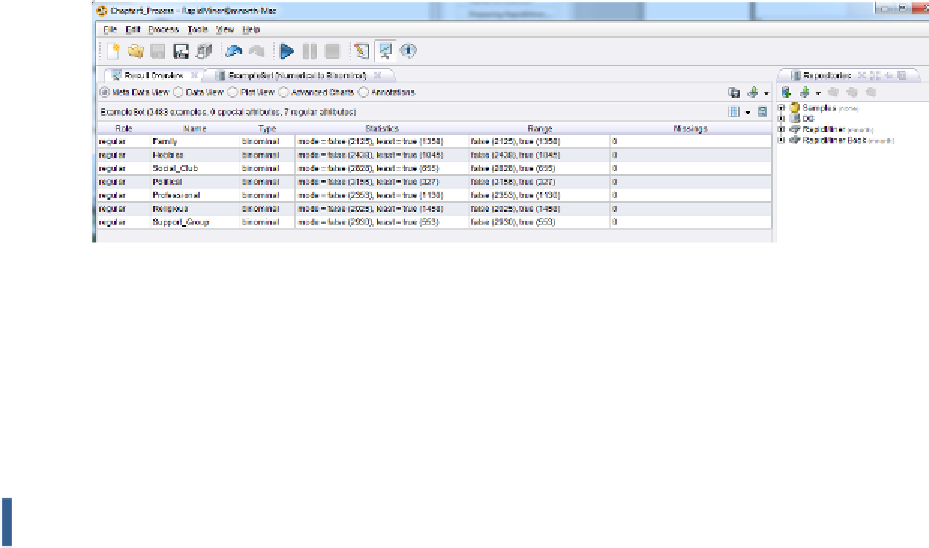Database Reference
In-Depth Information
Figure 5-5. The results of a data type transformation.
7)
For each attribute in our data set, the values of 1 or 0 that existed in our source data set
now are reflected as either 'true' or 'false'. Our data preparation phase is now complete
and we are ready for…
MODELING
8)
Switch back to design perspective. We will use two specific operators in order to generate
our association rule data mining model. Understand that there are many other operators
offered in RapidMiner that can be used in association rule models. At the outset, we
established that this topic is not a RapidMiner training manual and thus, will not cover
every possible operator that could be used in a given model. Thus, please do not assume
that this chapter's example is demonstrating the one and only way to mine for association
rules. This is one of several possible approaches, and you are encouraged to explore other
operators and their functionality.
To proceed with the example, use the search field in the operators tab to look for an
operator called FP-Growth. Note that you might find one called W-FPGrowth. This is
simply a slightly different implementation of the FP-Growth algorithm that will look for
associations in our data, so do not be confused by the two very similar names. For this
chapter's example, select the operator that is just called FP-Growth. Go ahead and drag it
into your stream. The FP in FP-Growth stands for
Frequency Pattern
. Frequency
pattern analysis is handy for many kinds of data mining, and is a necessary component of
association rule mining. Without having frequencies of attribute combinations, we cannot
determine whether any of the patterns in the data occur often enough to be considered
rules. Your stream should now look like Figure 5-6.








